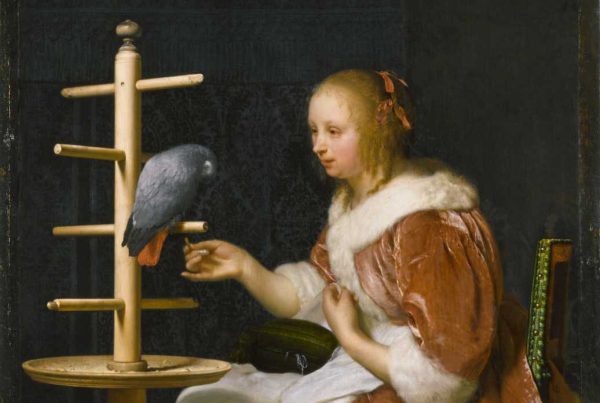
Before she began inventing crimes, Canadian mystery writer Louise Penny reported real ones, spending 18 years as a radio host and reporter for the Canadian Broadcasting Company. She left the radio field to pursue writing in the early 2000s, and, after an aborted attempt at a historical novel, she found her niche in mystery fiction with 2005’s Still Life, a book that took home awards in three countries. It established her recurring protagonist, Chief Inspector Armand Gamache, who works in a province of Quebec and often finds himself solving dark murders in bucolic settings.
Inspired by Christie, Simenon, Innes and the other great mystery writers, Penny followed up her debut with eight more titles, many of them accruing more awards, charting on the Times best-seller list, and even being optioned for movie adaptations. Her latest novel, How the Light Gets In, which hit stores this week, centers on the murder of the last living member of a celebrity quintuplet clan.
Penny will discuss and sign copes of the book on Thursday, Sept. 5 at Murder on the Beach, 273 Pineapple Grove Way, Delray Beach. In the meantime, she discussed her craft and her latest tome with Boca Raton.
Do you feel your broadcasting career helped you bring a level of nonfiction realism to your fiction?
I’d like to think so. My novels aren’t about forensics, or autopsies or fingerprints. They’re about emotions. Something happened, often years earlier, that culminated on a horrific crime. Some word, some slight, some gesture that you or I might consider harmless lodged in the murderer. And festered. That’s what I learned as a journalist. That to really understand what happened, we need to go back in time. Not forward.
What’s been your favorite unorthodox murder weapon from your body of work?
That’s an interesting question. Early in the series I used more unorthodox means of killing, so that the “how” of a crime was also an issue. Bow and arrow, electrocution. A statue falling. But as the series progressed, the “how” became less important and the “why” took centre stage. So now the weapon is obvious – but what powered the shot, the thrust, the swing is the mystery. What emotion was so rancid, so powerful, it forced a person to cross that line. To think the unthinkable. To make a ghost. And lose his own soul.
When you developed – and continue to develop – your lead character of Inspector Gamache, how did you distinguish him from other fictional inspectors?
I think it helps that I didn’t think of other fictional detectives while fashioning Gamache. I simply created a man whose company I’d enjoy, since I might be living with him for the rest of my life. Essentially, I created a man I’d marry. An adult, not a man/child. A man in charge of his own emotions, who knows that it takes very little character or courage to fire a gun, or lash out in any way. It’s sometimes necessary, but real courage is found in goodness and kindness. In absorbing blows and not having to reciprocate. In not allowing others to define the battleground. He is kind and loving, with a strong centre and an appreciation of what really matters. He’s not a perfect man. But he’s a good man.

Your latest book, How the Light Gets In, is set largely in the fictional village of Three Pines. How does this bucolic setting color the action? Is it similar to any American towns our readers might be familiar with?
Three Pines has long been both a setting and a main character in my books. It’s fictional, for sure, but inspired by all sorts of villages. Some in Quebec, some elsewhere in Canada. Some Vermont towns have inspired the books, as well as English villages. Three Pines is an intentionally hyper-ideal village. Beautiful and peaceful. I consider the books allegories and Three Pines a state-of-mind. A place we find only when we’re desperate. It’s not on any map and only found by people lost.
I’ve been lost in my life, and need not sarcasm and dark cynicism. Had too much of that. It drained me. Left me hollow and callow. I needed belonging, and kindness. I needed friendship. A warm hearth on a cold night. That’s Three Pines. But, like Gamache, while it’s good, it isn’t perfect. There’s always a serpent, even in Paradise. A shadow to the light. And that’s what makes Three Pines what it is, and the people who they are.
How did you come up with the idea of a celebrity quintuplet murder for How the Light Gets In?
Well, some readers might recognize the inspiration. I actually mention it in an “Afterward.” It comes from the Dionne Quints, born in Ontario just before the Second World War. But that’s where the similarities end, I think. I intentionally did not research the Dionnes. Partly because I would then be guilty of the very invasion my book describes – but also because I did not want to feel bound by the facts, but needed to be free to invent my own quints.
Some of the words used to describe your writing have been “courageous,” “masterful” and “magnificent.” Wonderful compliments, but do you try to stay above the fray of criticism, whether positive or negative?
I try…and am getting better and not reading reviews….because there’s a sort of mind-game they can play. Either make me feel better about my writing than I should, or worse. The opinion of others has long been a particular ‘monkey-on-my-back’ – so the less I depend on it to define how I feel about my work, the better. But I’m not there yet! A lifetime’s work, I suspect.
What is it like watching your first novel become a movie (for Canadian television, in 2013)? Have you become comfortable relinquishing control of the material to others?
It was a dreadful experience! So many people warned me and I turned down all offers, but this latest I thought would be different. But I suspect it’s a horrible process for most writers. Happily, the book will always be the book, no matter what happens with any movie. I must say, though, I thought Nathaniel Parker (though not how I personally imagine Gamache) did a wonderful job of capturing the key elements of the man. And that’s essential.
As a whole, have murder mysteries changed much since the golden age of Christie, Simenon, etc?
I’m just reading a Simenon right now, and that’s something I’ve wondered too. Simenon, Tey, Christie, Sayers are my literary godparents and I owe my writing to them. But I think mysteries are now much more character-driven. Christie apparently grew weary of Poirot, and I think one reason is that he never changed. Over 40 years he remained both physically and emotionally the same. Now, readers loved that. I loved that. I knew what I was getting and there’s great comfort in that. But as a writer, the only way I can really keep the writing and characters fresh is to have them evolve and grow, sometimes in ways that might make readers uncomfortable – but it’s the only way for the series and the characters to thrive.







